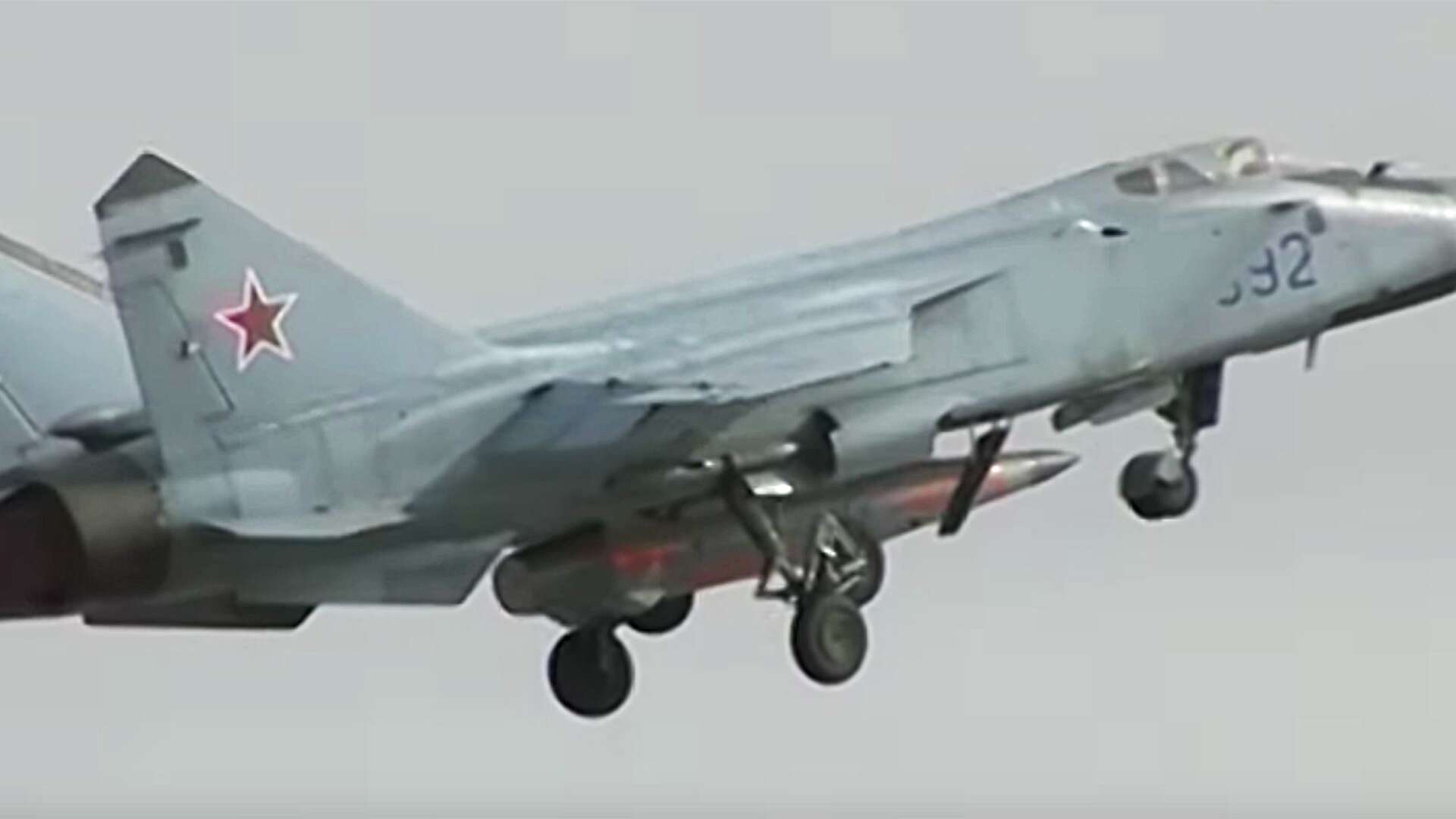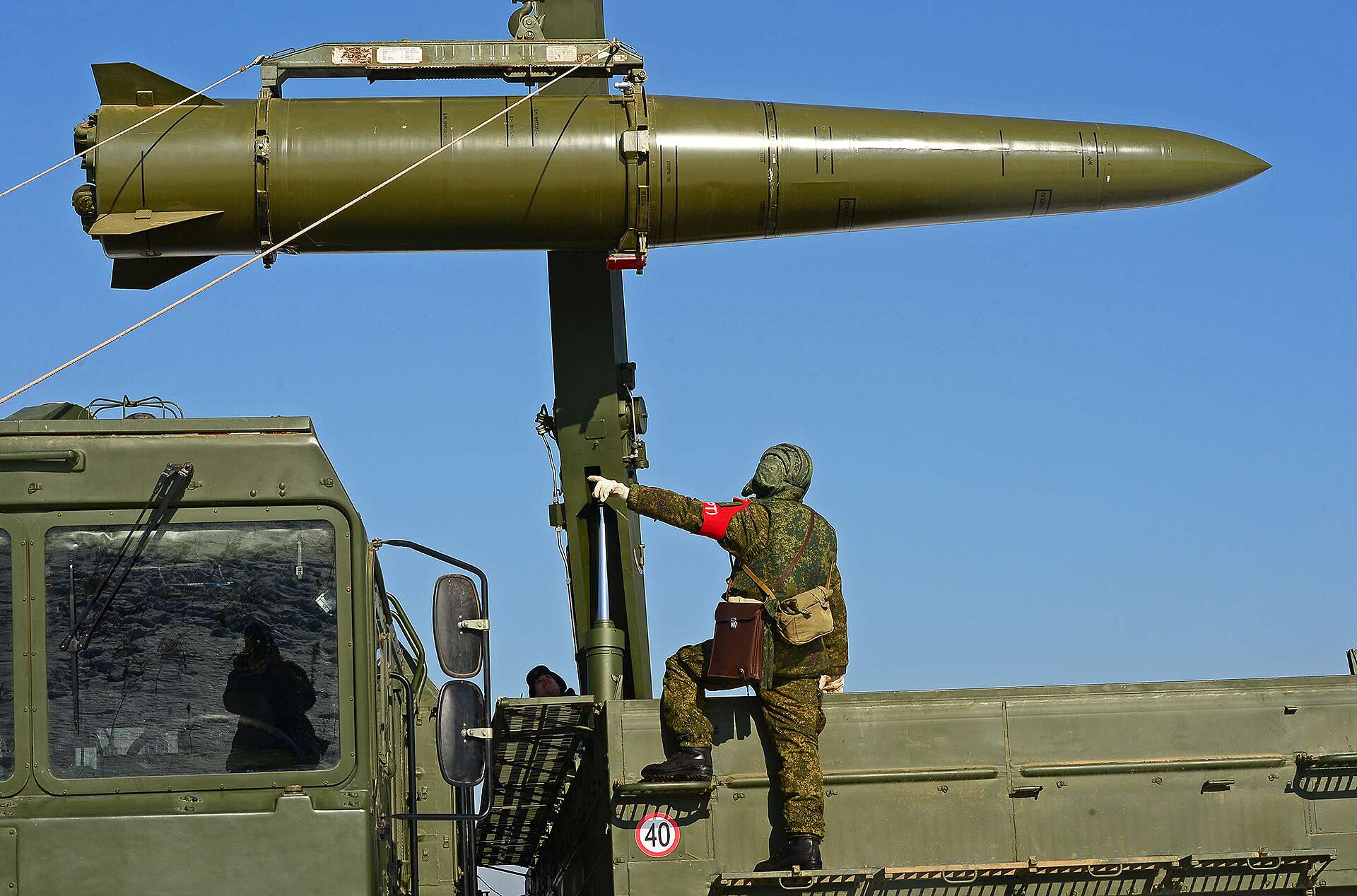Winston
Lorenzo von Matterhorn
- Joined
- Jan 31, 2009
- Messages
- 9,560
- Reaction score
- 1,748
Cold War v2.0 heats up, at least in bragging about yet to be deployed weapons. Keep in mind that Putie is running for reelection.
The latest report from Jim Oberg on visual observations of Russian missile launches. Relevant to Putin's recent boasts of nuclear-armed missiles that "cannot be defended against".
https://satobs.org/seesat_ref/misc/171226_kyss.pdf
Here's The Six Super Weapons Putin Unveiled During Fiery Address
The Russian president said "you listen to us now" as he boasted about nuclear-powered cruise missile, hypersonic weapons, nuclear torpedoes, and more - 1 Mar 2018
https://www.thedrive.com/the-war-zo...r-weapons-putin-unveiled-during-fiery-address
1. A nuclear-powered cruise missile with unlimited range (see Project Pluto's SLAM although that was a large terrain following cruise missile with multiple nukes to hit multiple targets - this could be a much smaller cruise missile designed to hit a single target)
2. Nuclear-armed hypersonic boost glide vehicles
3. A more capable heavy ICBM
4. A nuclear-armed underwater drone (it appears that the ultra-long-range high yield nuclear torpedo to attack carrier groups and coastal targets I've previosuly posted about here ISN'T a myth)
5. Hypersonic cruise missiles
6. Lasers
U.S. Has Been Secretly Watching Russia's Nuclear-Powered Cruise Missiles Crash and Burn
Successful or not, if Russia is test flying these weapons, this means it has been repeatedly crashing nuclear reactors into the ground or the ocean - 2 Mar 2018
https://www.thedrive.com/the-war-zo...uclear-powered-cruise-missiles-crash-and-burn
Excerpts:
...shortly after Putins address, CNN, in a story citing an anonymous U.S. government official, cast doubt on the possibility that this weapon was anywhere near operational. That individual added that the United States had observed a small number of Russian tests of its nuclear-powered cruise missile and seen them all crash. Fox News said its own sources indicated the same thing, that the weapon was in the research and development phase and that at least one had crashed during testing the arctic.
In a routine press conference on March 1, 2018, top Pentagon spokesperson Dana White declined to comment on the record about whether or not any of the weapon systems Putin announced were operational. She did, however, insist that none of them were new.
These these weapons that that are discussed have been in development a very long time, she said. Our [new] Nuclear Posture Review takes all of this into account.
With all this in mind, it remains unclear why the U.S. government has held back in exposing this project, but they may have been waiting for a more opportune moment. Unlike other systems, its not as clear cut whether the nuclear-powered cruise missile violates existing U.S.-Russia arms control agreements, such as the Intermediate-Range Nuclear Forces Treaty, or INF.
That agreement bans Russia and the United States from building production land-based cruise missiles that have ranges between 310 and 3,100 miles. Its not obvious how the treaty would necessarily apply to a missile with unlimited range. At the same time, the INF does not explicitly prohibit research and development of land-based cruise missiles that would otherwise violate its terms, a loophole the United States itself has announced its intention to exploit.
The U.S. government could be trying to gather enough data to more conclusively demonstrate that the Kremlin released dangerous amounts of radiation with these experiments, too. Russia may not have actually test flown the prototype missile with a nuclear reactor on board, using a surrogate conventional engine arrangement instead, though this is unlikely. This would be the only reasonable way for the Russians to launch the weapon without any possibility of releasing of radioactive material, but it would also largely defeat the purpose of such tests.
But now that the existence of the program is out in the open, we may soon see more Russian boasts about its capability and American criticisms regarding its safety.
Putin's Air-Launched Hypersonic Weapon Appears To Be A Modified Iskander Ballistic Missile
Russia seems to have adapted their Iskander short-range ballistic missile for launch from the belly
2 Mar 2018
https://www.thedrive.com/the-war-zo...s-to-be-a-modified-iskander-ballistic-missile
One of the weapons touted in Putin's speech was an air-launched hypersonic anti-ship missile launched from the belly of a massive MiG-31 Foxhound. Upon closer examination, one of our commenters "Idunknown" noted that it looked exactly like an Iskander ballistic missile. We took a closer look and after doing a proportional/dimensional analysis of the missile in relation to the Foxhound we came to the same conclusion. In fact, the missile doesn't even look that highly modified, although it's exhaust fairing, which drops off during launch, throws off the Iskander's signature profile a bit at first glance.
The Iskander and its newest variant, the Iskander-M, are not air breathing missiles. They use solid rocket fueled motors to propel them on their ballistic arcs. Yet Russia claims its new hypersonic missile has a flight profile like that of a cruise missile. All this begs the question is this missile actually an air-launched ballistic missile system?
So for the critics who rightfully question the economic and technological feasibility of Putin's proposed super weapon arsenal, it's important not to bluntly classify all of these concepts as farcical or unrealistic. Clearly each of the systems Putin touted in his address are in different phases of their developmental timelines, and the full capabilities stated for each weapon may not be entirely accurate or could even be downright misleading, but some of these weapons are actually quite feasible, at least to a certain degree.
With this in mind, and taking into account the recent history of many prominent analysts'not to mention the U.S. intelligence apparatus as a wholeatrocious handicapping of China's and North Korea's weapons development abilities, we shouldn't underestimate Russia or its super weapons ambitions.


The latest report from Jim Oberg on visual observations of Russian missile launches. Relevant to Putin's recent boasts of nuclear-armed missiles that "cannot be defended against".
https://satobs.org/seesat_ref/misc/171226_kyss.pdf
Here's The Six Super Weapons Putin Unveiled During Fiery Address
The Russian president said "you listen to us now" as he boasted about nuclear-powered cruise missile, hypersonic weapons, nuclear torpedoes, and more - 1 Mar 2018
https://www.thedrive.com/the-war-zo...r-weapons-putin-unveiled-during-fiery-address
1. A nuclear-powered cruise missile with unlimited range (see Project Pluto's SLAM although that was a large terrain following cruise missile with multiple nukes to hit multiple targets - this could be a much smaller cruise missile designed to hit a single target)
2. Nuclear-armed hypersonic boost glide vehicles
3. A more capable heavy ICBM
4. A nuclear-armed underwater drone (it appears that the ultra-long-range high yield nuclear torpedo to attack carrier groups and coastal targets I've previosuly posted about here ISN'T a myth)
5. Hypersonic cruise missiles
6. Lasers
U.S. Has Been Secretly Watching Russia's Nuclear-Powered Cruise Missiles Crash and Burn
Successful or not, if Russia is test flying these weapons, this means it has been repeatedly crashing nuclear reactors into the ground or the ocean - 2 Mar 2018
https://www.thedrive.com/the-war-zo...uclear-powered-cruise-missiles-crash-and-burn
Excerpts:
...shortly after Putins address, CNN, in a story citing an anonymous U.S. government official, cast doubt on the possibility that this weapon was anywhere near operational. That individual added that the United States had observed a small number of Russian tests of its nuclear-powered cruise missile and seen them all crash. Fox News said its own sources indicated the same thing, that the weapon was in the research and development phase and that at least one had crashed during testing the arctic.
In a routine press conference on March 1, 2018, top Pentagon spokesperson Dana White declined to comment on the record about whether or not any of the weapon systems Putin announced were operational. She did, however, insist that none of them were new.
These these weapons that that are discussed have been in development a very long time, she said. Our [new] Nuclear Posture Review takes all of this into account.
With all this in mind, it remains unclear why the U.S. government has held back in exposing this project, but they may have been waiting for a more opportune moment. Unlike other systems, its not as clear cut whether the nuclear-powered cruise missile violates existing U.S.-Russia arms control agreements, such as the Intermediate-Range Nuclear Forces Treaty, or INF.
That agreement bans Russia and the United States from building production land-based cruise missiles that have ranges between 310 and 3,100 miles. Its not obvious how the treaty would necessarily apply to a missile with unlimited range. At the same time, the INF does not explicitly prohibit research and development of land-based cruise missiles that would otherwise violate its terms, a loophole the United States itself has announced its intention to exploit.
The U.S. government could be trying to gather enough data to more conclusively demonstrate that the Kremlin released dangerous amounts of radiation with these experiments, too. Russia may not have actually test flown the prototype missile with a nuclear reactor on board, using a surrogate conventional engine arrangement instead, though this is unlikely. This would be the only reasonable way for the Russians to launch the weapon without any possibility of releasing of radioactive material, but it would also largely defeat the purpose of such tests.
But now that the existence of the program is out in the open, we may soon see more Russian boasts about its capability and American criticisms regarding its safety.
Putin's Air-Launched Hypersonic Weapon Appears To Be A Modified Iskander Ballistic Missile
Russia seems to have adapted their Iskander short-range ballistic missile for launch from the belly
2 Mar 2018
https://www.thedrive.com/the-war-zo...s-to-be-a-modified-iskander-ballistic-missile
One of the weapons touted in Putin's speech was an air-launched hypersonic anti-ship missile launched from the belly of a massive MiG-31 Foxhound. Upon closer examination, one of our commenters "Idunknown" noted that it looked exactly like an Iskander ballistic missile. We took a closer look and after doing a proportional/dimensional analysis of the missile in relation to the Foxhound we came to the same conclusion. In fact, the missile doesn't even look that highly modified, although it's exhaust fairing, which drops off during launch, throws off the Iskander's signature profile a bit at first glance.
The Iskander and its newest variant, the Iskander-M, are not air breathing missiles. They use solid rocket fueled motors to propel them on their ballistic arcs. Yet Russia claims its new hypersonic missile has a flight profile like that of a cruise missile. All this begs the question is this missile actually an air-launched ballistic missile system?
So for the critics who rightfully question the economic and technological feasibility of Putin's proposed super weapon arsenal, it's important not to bluntly classify all of these concepts as farcical or unrealistic. Clearly each of the systems Putin touted in his address are in different phases of their developmental timelines, and the full capabilities stated for each weapon may not be entirely accurate or could even be downright misleading, but some of these weapons are actually quite feasible, at least to a certain degree.
With this in mind, and taking into account the recent history of many prominent analysts'not to mention the U.S. intelligence apparatus as a wholeatrocious handicapping of China's and North Korea's weapons development abilities, we shouldn't underestimate Russia or its super weapons ambitions.


